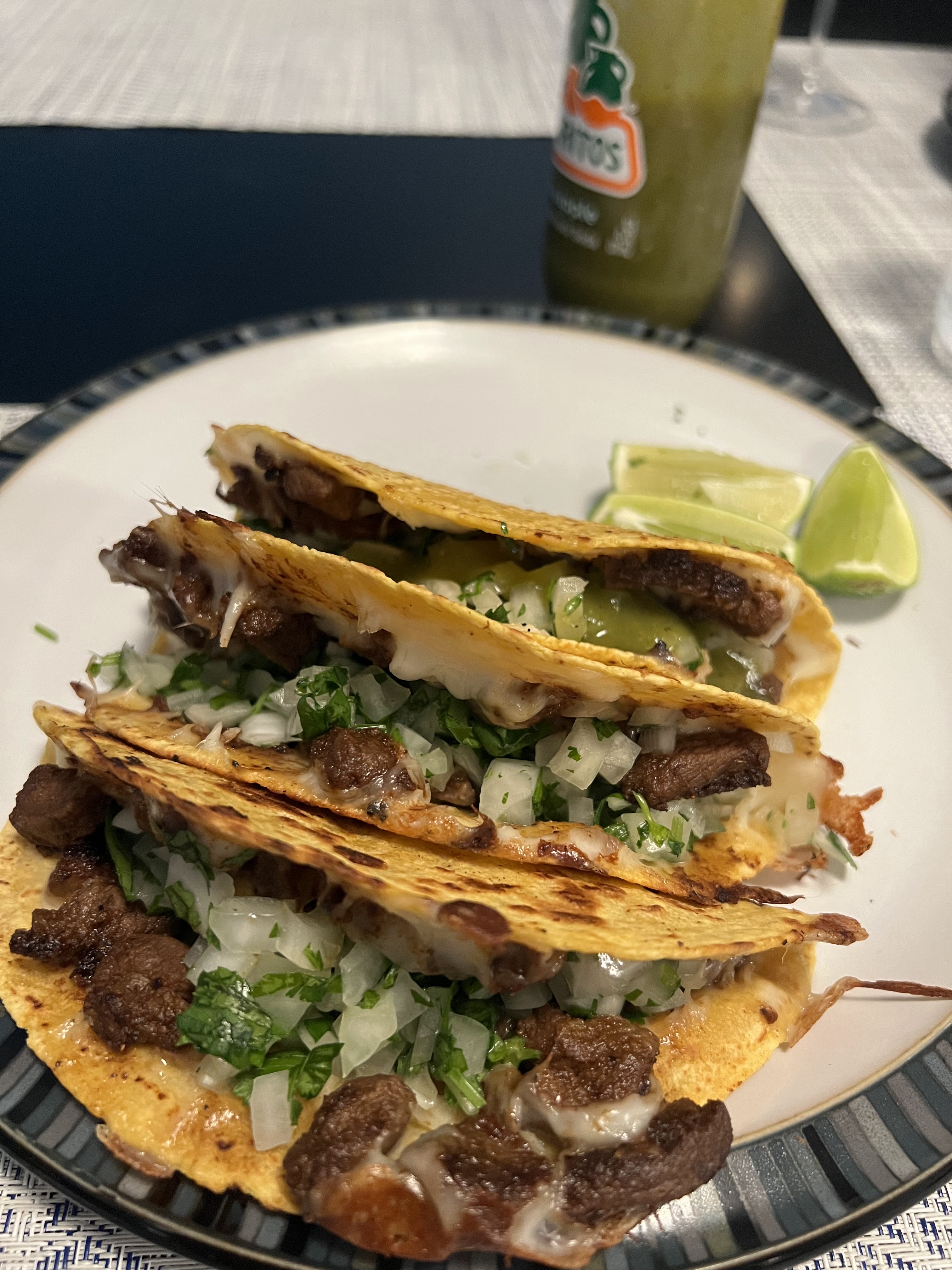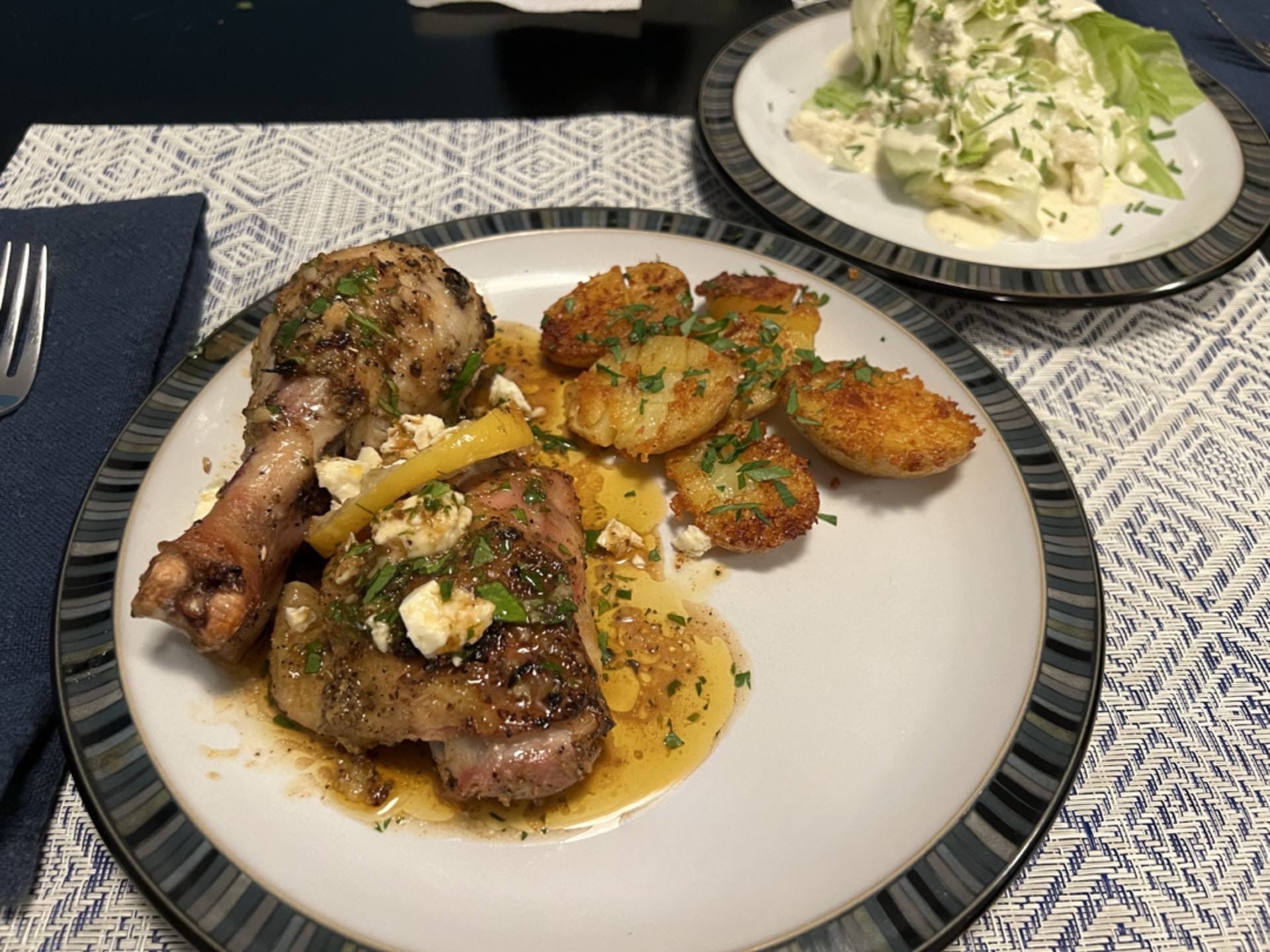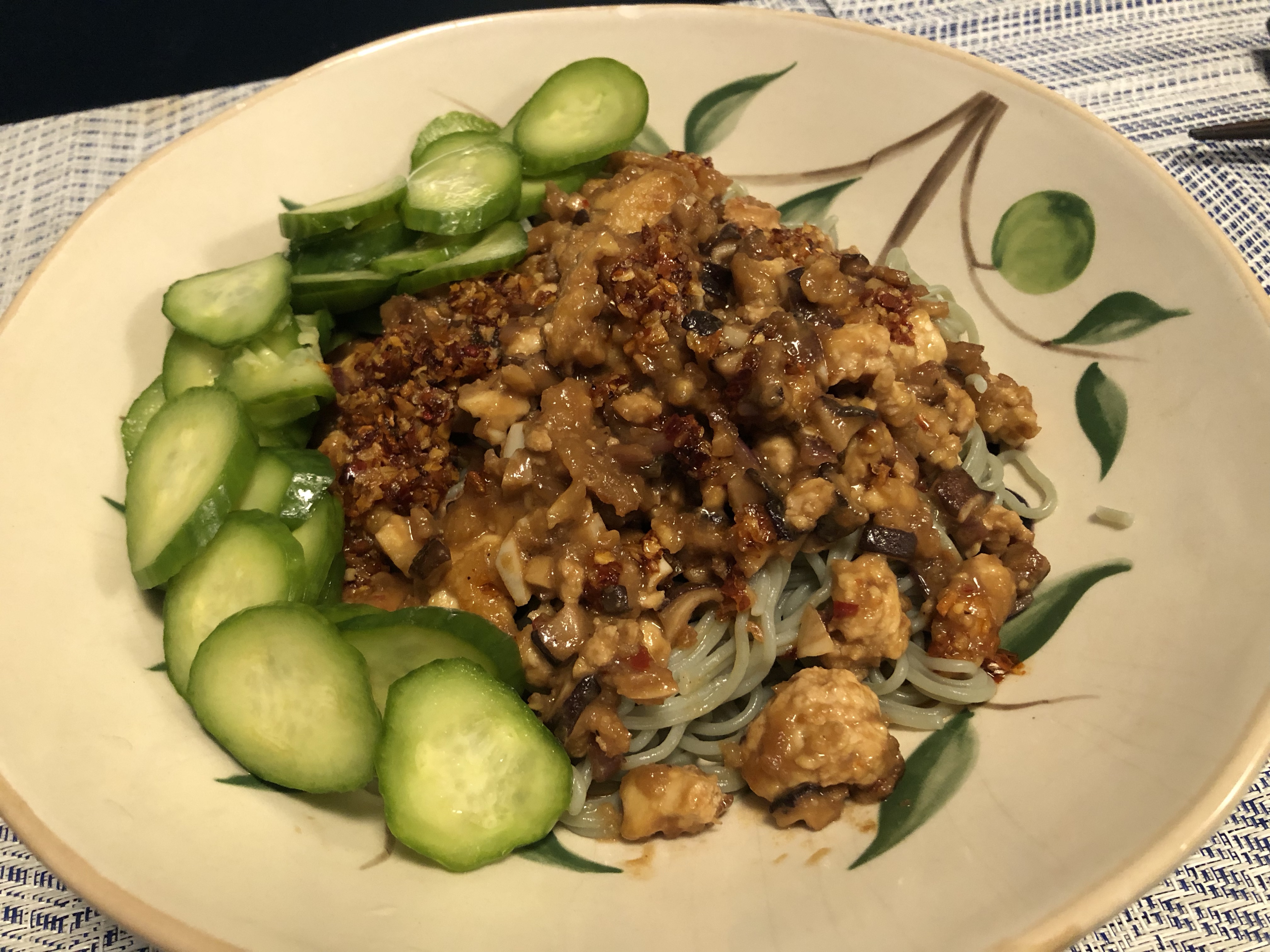I have cooked on both gas and electric and gotten pretty familiar with the quirks of both. There is always a readjustment period when switching from one to the other, but both are pretty predictable and I can usually hit my stride quickly. Induction cooking, however, is another beast entirely. Rather than relying on indirect radiation, convection, or thermal conduction, induction cooking uses an electrical current to produce a magnetic field that excites iron molecules, heating the pan and its contents very rapidly. It is more efficient because it has good electrical coupling between the pan and the coil, and can be quickly turned on and off. The cook surface both heats the pan quickly and cools off quickly so there are safety benefits as well.
When we moved in with my mom last May to start seriously saving for a house, we did not have our own kitchen which drove. Me. Crazy. A Hungry Ginger without a kitchen is a Hangry Ginger indeed. To improve our transitory situation, we got a beefy Breville Smart Oven and a two “burner” induction cooktop. Luckily we did not need to get new pans for the cooktop, as our Demeyer cook set is induction compatible. The controls took some getting used to as they measure in temperature rather than heat level. This would seem more precise, but when you are used to things cooking on low, medium or high and all recipes use these metrics as well, choosing a temp between 140 and 460 can be a tad confounding.
Because it is so efficient, the induction cooktop heats very quickly and much less energy is lost in the process of heating. The following is not 100% scientific, but it helps me conceptualize the differences a bit: Think about traditional heating methods as two step systems: Electricity must heat an electric coil and gas creates a flame before heating the pan. With induction cooking, the stove and the pan are, in a sense, one system with the electromagnetic field produced in the stove being carried seamlessly into the metal of the pan.
The first time I made bacon on it, I burnt the shit out of it in the blink of an eye. Eggs seemed to go from runny to seared to the pan in seconds. I solved the bacon issue by using the aforementioned Breville oven to bake it and learned that for eggs, I should heat up the pan at 300 for a min, crack the eggs and then turn the temp down to 210 or 260. Through trial and error, I gradually got used to the induction cooktop.
Here are a couple things I have learned about different types of induction cooking over this past year and a half. Keep in mind that I am working with a portable induction cooktop that cost me all of $200 on amazon. Built-in ranges from the major manufacturers are surely more consistent and less finicky.
Induction is great for:
- Heating up water quickly for pasta or mac and cheese emergencies.
- Related to this, steaming anything.
- Soups and stews – Basically anything that doesn’t require really precise cooking (there are only 4 temp settings and there is no “in between.”)
Induction works well if close attention is paid for:
- Eggs – switch between a couple settings to finesse them to your perfect doneness.
- Sauteed veggies – as with eggs, start on a higher heat and turn down for more long term cooks or else you will get crispy critters or flaccid failures.
Induction is ok for:
- Meat – It can be difficult to get an even brown (at least on my portable cooktop) and I found myself having to rotate pieces of meat to ensure an even brown. The brown they did get was always good, but a little too labor intensive and uncertain in my opinion.
- Anything else that requires a consistent steady heat. I noticed that with this cooktop, once the pan reached the target temp, it would stay there briefly but then cool down and heat up again to get back up to temp. This cycle wreaked havoc on an ill-fated attempt at crepes and more than one chicken thigh.
Overall, the induction cooktop has been great because it has enabled me to cook meals in my own little makeshift kitchen. I’ve needed to get pretty creative at times because of the whole two burner situation (I’ve made good use of trivets and try to do a mix of stovetop cooking and oven cooking for most meals so I wouldn’t need more than two burners). However, as a nice bookend to the whole experience, I am happy to say that I am on the cusp of getting a big girl gas range. I am looking forward to being able to make more than two things at once on the stove (though the hubby is probably not looking forward to more dishes). And I will be doubling my counter space because it will no longer be taken up by the Smart Oven and the induction cooktop. I appreciate this experience though and I think it has helped me to become a more intentional cook who savors the small joys, like four burners and familiar heat settings.













